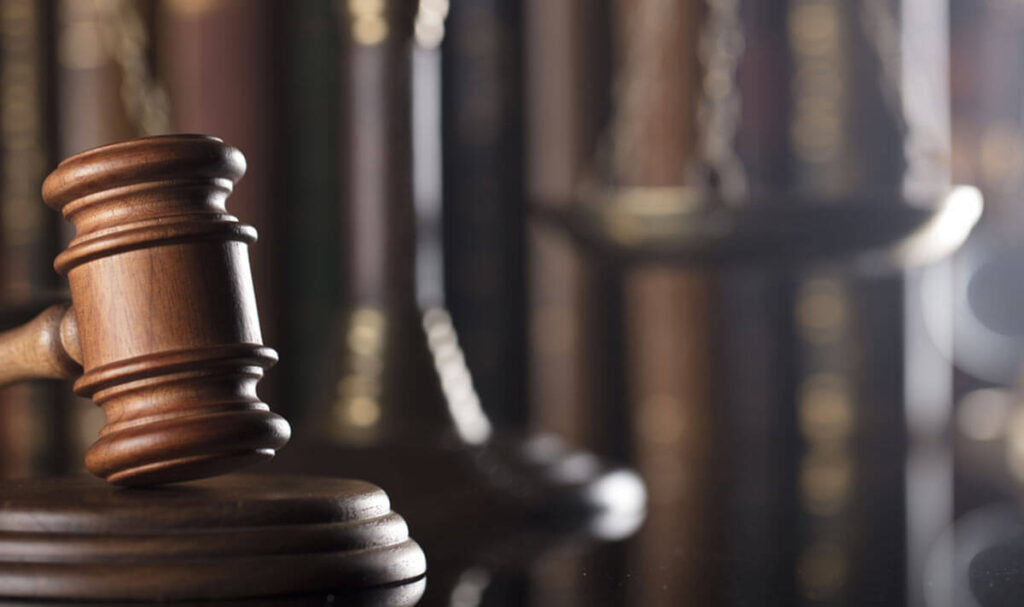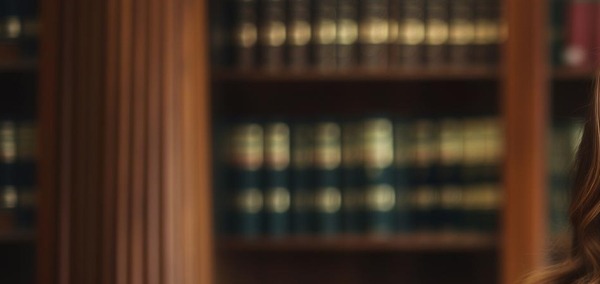When you’ve been injured due to someone else’s negligence in Las Vegas, the path to fair compensation can seem daunting. One of the most critical, yet often misunderstood, aspects of a personal injury case is the burden of proof – the obligation to provide sufficient evidence to support your claim. Understanding how this works in Nevada and what you need to prove is essential for success. At Jack Bernstein Injury Lawyers, our experienced Las Vegas personal injury attorneys are here to guide you through this complex process, help you build a strong case, and fight for the justice you deserve.
| Key Takeaways | What That Means for You |
|---|---|
| In a personal injury case, the injured person (plaintiff) has the burden to prove their claim. | You must gather strong evidence to show the other party’s fault and the extent of your damages. |
| The standard of proof in a personal injury case is a “preponderance of the evidence.” | Your evidence must show that your claim is more likely to be true than not, which is a lower standard than “beyond a reasonable doubt.” |
| To win your case, you must prove four elements: duty of care, breach of duty, causation, and damages. | You need evidence that the defendant owed you a duty, failed to uphold that duty, directly caused your injuries, and that you suffered actual losses as a result. |
| Nevada follows the rule of modified comparative negligence. | If you are found to be 50% or less at fault, your damages will be reduced by your percentage of fault. If you are more than 50% at fault, you cannot recover. |
| The defendant may try to shift blame to a third party not named in the lawsuit, known as an “empty chair” defense. | Nevada law can make these situations complex, underscoring the need for a skilled personal injury attorney to counter such strategies. |
| Meeting the burden of proof is crucial to winning your case and getting fair compensation. | An experienced Las Vegas personal injury lawyer can assess your case, gather necessary evidence, and guide you through the legal process. |
Burden of Proof: The Key to Winning Your Injury Case
Burden of proof is a critical concept in any legal case, and it can make or break your outcome.
In personal injury cases, understanding who carries this burden and what it entails is essential.
Who Carries the Burden?
The burden of proof falls on the plaintiff – that’s you, the person bringing the claim.
Your Job: Present evidence that demonstrates the defendant’s negligence and how it caused your injuries.
This can include:
- Medical records
- Witness statements
- Expert testimony
- And more
Key Difference: In a civil case like a personal injury claim, you must prove your case by a “preponderance of the evidence.”
That’s a lower standard than criminal cases, which require proof “beyond a reasonable doubt.”
“Burden of proof plaintiff” and “who has to prove negligence” are key concepts to understand.
Working with an experienced Las Vegas personal injury attorney can help you navigate this process and build a strong case to meet your burden.
“Preponderance of the Evidence” – What Does It Mean?
“Preponderance of the evidence” is the legal standard used in civil cases, including personal injury claims.
But what does it actually mean?
More Likely Than Not
In simple terms, it means your evidence must show that your claim is more likely to be true than not.
Picture a Scale: If your evidence tips the scale even slightly in your favor, you’ve met the preponderance standard.
It’s Not Absolute Certainty: You don’t need to prove your case beyond a shadow of a doubt.
Just enough evidence to make your claim more believable than not.
What You MUST Prove to Win
To prevail in your personal injury case, you need to provide evidence that establishes four essential elements:
- Duty of Care: The defendant owed you a legal obligation to act with reasonable care to avoid causing harm. This could be a duty owed by all drivers to follow traffic laws, a property owner’s duty to maintain safe premises, or a doctor’s duty to provide competent medical care.
- Breach of Duty: The defendant failed to fulfill their duty of care. They acted (or failed to act) in a way that a reasonably prudent person would not have under similar circumstances. Examples could include a driver texting while driving, a store owner ignoring a spill on the floor, or a surgeon operating while fatigued.
- Causation: The defendant’s breach of duty directly caused your injuries. You must show that if not for the defendant’s negligence, you would not have been harmed. This can be straightforward in some cases (like a rear-end collision) but more complex in others (like medical malpractice).
- Damages: You suffered actual harm or losses as a result of the defendant’s actions. This could include physical injuries, medical bills, lost wages, pain and suffering, or other costs. You will need documentation to prove the extent of your damages.
Gathering strong evidence for each of these elements is essential to meeting your burden of proof. This may involve:
- Police reports and witness statements to show how the incident occurred
- Medical records and expert testimony to establish the extent and cause of your injuries
- Proof of your financial losses, like hospital bills, pay stubs, or repair estimates
An experienced personal injury lawyer can help you identify what evidence you need and how to obtain it. They can also present your evidence persuasively to the insurance company or in court.
Nevada Twist: When You May Share the Blame
In some cases, the defendant may argue that you were also at fault for the incident that caused your injuries. If they succeed, it could impact your ability to recover compensation.
Comparative Negligence in Action
Nevada follows a rule called “modified comparative negligence” to handle situations where both parties share some blame. Here’s how it works:
- If you are found to be more than 50% at fault, you cannot recover any compensation.
- If you are 50% or less at fault, you can still recover, but your damages will be reduced by your percentage of fault.
Example: Let’s say you were hit by a distracted driver, but you were also speeding at the time of the crash. A jury finds the other driver 80% at fault and you 20% at fault. If your damages were $100,000, you would only recover $80,000 due to your 20% share of the blame.
Determining fault percentages is a complex and fact-specific analysis. This is where having a skilled Las Vegas personal injury lawyer is invaluable. They can gather evidence to minimize your share of fault and fight to maximize your compensation.
Can the Defendant Shift the Burden?
In some cases, the defendant may try to shift the blame to someone else, a tactic known as the “empty chair defense.” This can complicate your case.
The Rare “Empty Chair” Scenario
An empty chair defense is when the defendant argues that a third party, who is not present in the lawsuit, is actually responsible for your injuries.
Example: You trip on a broken stair at a rented office. The business owner claims it was the landlord’s responsibility to fix it, but the landlord is not part of your lawsuit.
Nevada law can make these situations tougher to navigate than in some other states. The defendant must provide clear evidence of the third party’s fault, but if they succeed, it could reduce or eliminate their liability, even if that third party never gets brought into the case.
These complex situations underscore the importance of having a knowledgeable personal injury lawyer who understands Nevada law and can anticipate and counter these defensive strategies.
Why Burden of Proof Matters to YOU
Meeting the burden of proof is essential to winning your personal injury case and getting the compensation you need to move forward. But the process can be daunting, especially when you’re also dealing with the pain and stress of an injury.
Don’t Be Discouraged
It’s normal to feel uncertain about whether you have enough evidence to prove your case. Many injury victims feel this way.
Remember: you don’t have to do this alone. Assessing the strength of your case is a key part of a personal injury lawyer’s job.
Get Clarity, Get Guidance
At Jack Bernstein Injury Lawyers, we offer free consultations to help Las Vegas injury victims understand their legal options. During your consultation, we can:
- Listen to your story and assess the strength of your case
- Explain the relevant laws and how they may apply to your situation
- Discuss potential strategies for proving the defendant’s liability
- Outline the next steps and what you can expect if you choose to move forward
You don’t have to navigate the complex legal system on your own. If you’ve been injured in Las Vegas, let us guide you. Call [phone number] or fill out our online form to schedule your free consultation today.
Frequently Asked Questions About Burden of Proof in Nevada Personal Injury Cases
Many personal injury lawyers, including Jack Bernstein Injury Lawyers, work on a contingency fee basis. This means you don’t pay upfront for costs like expert testimony. Instead, your lawyer covers these costs and is reimbursed from your settlement or verdict. If you don’t win, you don’t pay.
The amount of evidence needed varies by case, but generally, you must have enough to show your claim is more likely to be true than not. This could include medical records, witness statements, expert opinions, and more. An experienced personal injury lawyer can help assess whether you have sufficient evidence.
Nevada follows the rule of modified comparative negligence. If you are found to be 50% or less at fault, you can still recover damages, but they will be reduced by your percentage of fault. If you are more than 50% at fault, you cannot recover. An attorney can help you minimize your assigned fault percentage.
Nevada’s statute of limitations for most personal injury cases is two years from the date of the injury. There are some exceptions that can shorten or lengthen this timeframe. It’s best to consult with a lawyer as soon as possible to ensure you don’t lose your right to sue.
While you are not required to have a lawyer, having an experienced Las Vegas personal injury attorney can make a significant difference in your ability to meet your burden of proof and obtain fair compensation. A lawyer can gather evidence, hire necessary experts, and present your case persuasively to the insurance company or in court.
Contact Us for a Free Consultation
If you have been injured in an accident, contact Jack Bernstein Injury Lawyers for a free, no obligation consultation with experienced Las Vegas accident lawyers. You will gain an advocate for every stage in the claims process until you have the compensation you deserve.
Jack Bernstein Injury Lawyers is available to help you handle your injury claim in the Las Vegas metropolitan area and beyond. Jack Bernstein and his team can offer you the personalized service and legal representation you deserve after an accident.
Call us at (702) 633-3333 or contact us today for a free consultation to discuss your case.


